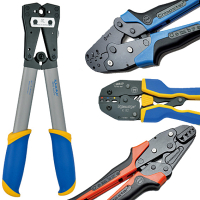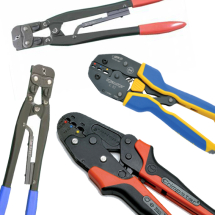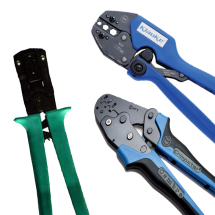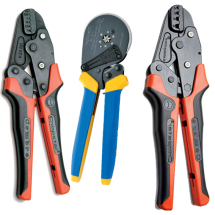Mechanical Hand Tools – Precision & Power in Every Crimp
Mechanical hand tools deliver reliable crimping for tube terminals and lugs. At Cablectrix our mechanical tools cover everything from small plier-style hand tools (up to ~16-25?mm²) through to large tools capable of handling cables up to 150?mm² with various crimp profiles (hexagonal, indent, etc.). Many tools include rotating dies or interchangeable series dies for flexibility and precision.
1. Tool Types & Crimp Profiles
Mechanical hand tools include varied mechanisms and profiles to suit different terminal types and job requirements:
- Plier-style hand crimpers for smaller terminals and lugs up to ~25?mm²
- Tools with rotating or swappable dies for flexible usage
- Hexagon / indent crimp profiles for reliable electrical and mechanical performance
- Large mechanical tools for heavy-gauge cables up to ~150?mm²
2. Brands & Series Available
We stock mechanical hand tools from manufacturers known for build quality and consistency:
- Klauke series tools including models with series-4 die compatibility
- Models from other trusted manufacturers covering various application segments
- F-type crimp tools for standard connector types
- Wire end ferrule and cord end tools for processing ferrules and similar terminals
3. Key Features to Consider
Choosing the right mechanical hand tool means thinking through what the job demands:
- Size capacity – ensure the tool matches or exceeds the cable or terminal sizes you’ll use
- Crimp profile and impact force for electrical and mechanical reliability
- Die interchangeability or rotating heads for flexibility in diverse tasks
- Handle ergonomics (comfort, grip, leverage) to reduce fatigue
- Durability of components — steel parts, joints, and jaws built to last
4. Typical Application Scenarios
Mechanical hand crimp tools are commonly used where portability and simplicity matter:
- Site jobs for electricians installing medium-voltage or heavy gauge cables
- Workshop use where precise, repeatable crimps are needed but hydraulic or battery tools aren't practical
- Panel building where multiple terminal sizes are used and tool flexibility is helpful
- Low-volume or maintenance work where reliability per tool matters more than speed
5. Maintenance & Long-Term Use
Keeping mechanical hand tools working well over time depends on good maintenance and correct usage:
- Regular cleaning of dies and jaws to avoid dirt or debris affecting crimp quality
- Check for wear or deformation — replace dies or parts as needed
- Keep tools lightly lubricated at pivot points to maintain smooth motion
- Ensure proper calibration or verification for heavy-duty tools where specifications matter





